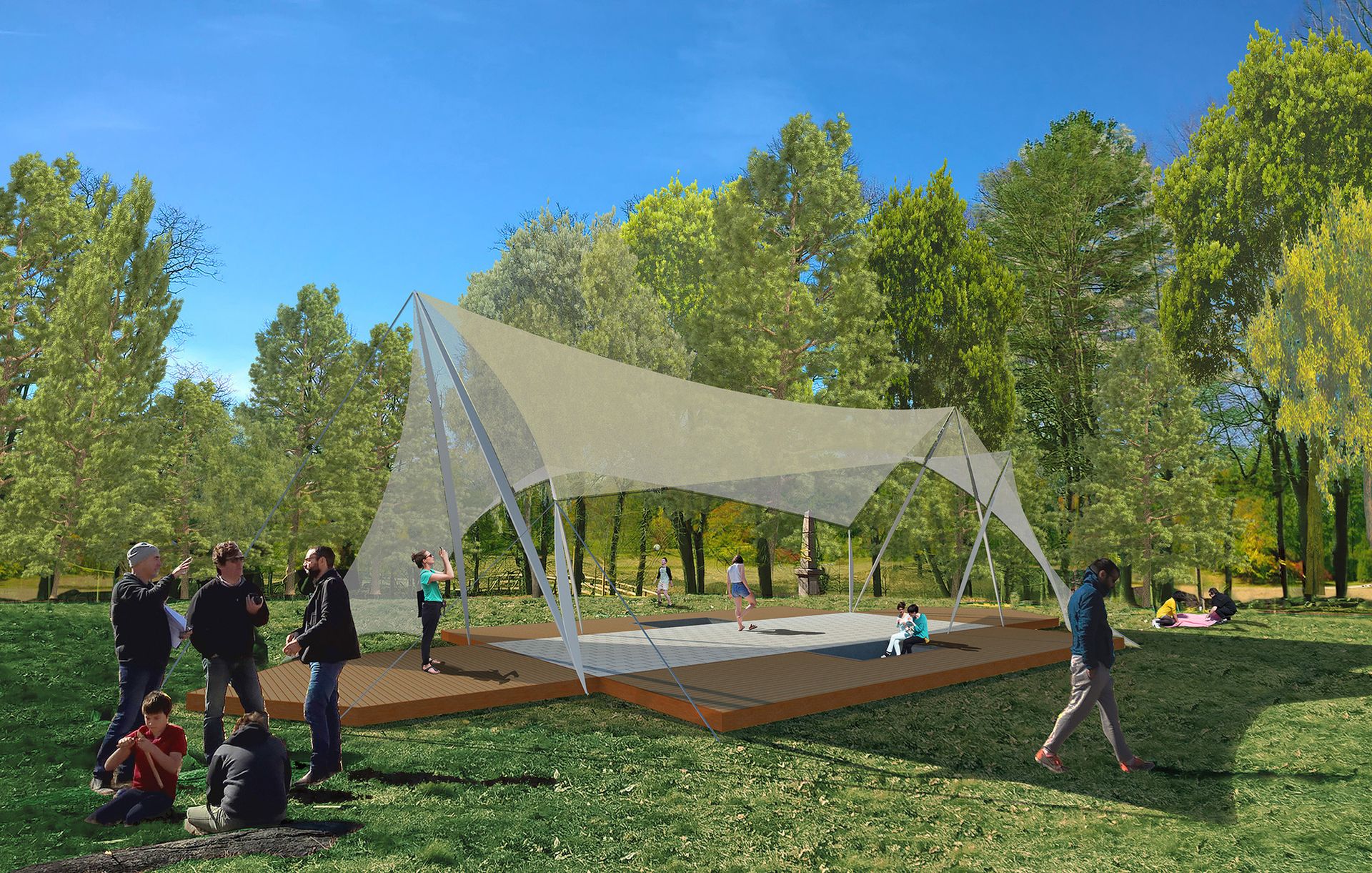The two-year public art project, Art and the Landscape, launches in Massachusetts this year with two socially conscious works by the artists Jeppe Hein and Sam Durant, installed in historic locations. The initiative, helmed by the Boston-based curator Pedro Alonzo, is sponsored by The Trustees, a 125-year-old non-profit conservation group that oversees the preservation of more than 100 heritage sites in the state.
On 5 August, a participatory work by the multimedia artist Sam Durant open in the north field of The Old Manse in Concord, a house that was built in 1770 by William Emerson, the Revolutionary War minister (and grandfather of the transcendentalist writer Ralph Waldo Emerson). The Meeting House (2016) focuses on slavery and racial tensions throughout history in America. The installation, conceptually based on the homes of the first emancipated slaves in the colonial town, is an open pavilion with a transparent tent-like structure that will host workshops, readings, and talks about African-American writing, philosophy and culture. The piece “seeks to make the connection between our difficult past, slavery and segregation, to the fact that we are still today unable to create the just society that our revolution promised,” the artist said in a statement. “I believe that the aesthetic realm offers a unique way into such difficult and intractable issues.”

Then on 18 September, Jeppe Hein’s A New End (2016) opens in the historic public park World’s End in Hingham, Massachusetts, one hour outside of Boston. The work is a labyrinth made from three lines of mirrored stainless steel posts arranged in a spiral, creating the pattern of a nautilus shell when viewed from above. The space feels “isolated, remote, quiet and spiritual”, Alonzo says. World’s End is located on a remote peninsula that juts into Boston Harbour, and would become an island at high tide before colonial farmers dammed a nearby salt marsh. The American landscape architect designed a farming community for the site in 1890, although this was never fully realised, and it was later shortlisted as a proposed home for the United Nations in 1945, before it was finally preserved as a public park in 1967. The opening of the installation will include live music and art making activities.

